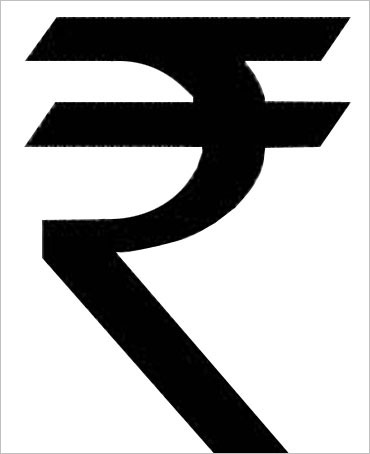 The annual report of the ministry of finance points out that the total number of income tax assessees as on October 30, 2014, had stood at 4.79 crore.
The annual report of the ministry of finance points out that the total number of income tax assessees as on October 30, 2014, had stood at 4.79 crore.
The number had stood at 4.7 crore as on March 31, 2014. As on March 31, 2011, the number had stood at 4.08 crore. This means that between March 2011 and March 2014, the number of assessees filing their income tax returns went up by a minuscule 4.8 per year.
In fact, the method of measuring the total number of income tax assessees was revised in March 2014 and this revision has pushed up the number of assessees considerably. As per the earlier method, the total number of assessees as on March 31, 2011, had stood at 3.55 crore. The new method pushed up the total number of assessees by more than 50 lakh, as of end March 2011. This is not a reason to worry given that the new methodology is more reliable and accurate.
Nevertheless, despite this revision, on the whole, the total number of income tax assessees in India remains very small. In comparison, nearly 45% of American population files income tax return. What this means in an Indian context is that India has a huge informal economy which as Taimur Baig of Deutsche Bank Research puts in a recent research note, operates “outside the lens of formal observation, oversight, or analysis.”
“India’s statistics commission suggests that half the gross national product is accounted for by the informal economy…Numerous businesses are unincorporated, transactions involving huge quantities proceed daily on a cash basis, most people and businesses do not file for taxes, making a sizeable chunk of the economy unregulated and unsupervised…The government finds it hard to widen the tax net, ending up overburdening the formal sector,” writes Baig.
The government’s inability to widen the tax net as Baig writes and as data in the annual report of the ministry of finance suggests, has led to a situation where the government has to regularly slash expenditure towards the last few months of the financial year. Take the case of the last financial year 2014-2015, the total expenditure of the government when the budget was presented in July 2014 had stood at Rs 17,94,892 crore. By the time the next budget was presented in February 2015, the total expenditure had been slashed by 6.3% to Rs 16,81,158 crore. This is a trend that has played out in each of the last three financial years.
Typically when the government has to cut down on its expenditure, it is the plan expenditure which faces the severest cut. Take the case in 2014-2015, the plan expenditure at the beginning of the year had been set at Rs 4,53,503 crore. It finally came in at 19.1% lower or Rs 3,66,884 crore As I have often pointed out in the past, plan expenditure is essentially money that goes towards creation of productive assets through schemes and programmes sponsored by the central government.
Non-plan expenditure on the other hand is an outcome of plan expenditure. For example, the government constructs a highway using money categorised as a plan expenditure. But the money that goes towards the maintenance of that highway is non-plan expenditure. Interest payments on debt, pensions, salaries, subsidies and maintenance expenditure are all non-plan expenditure. Given the regularity of the non-plan expenditure the asset creating plan-expenditure gets slashed. And that is clearly not a good thing.
This largely happens due the inability of the government to grow its tax base. Another disturbing trend that has emerged over the last few years is the growing dependence of the government on revenues from indirect taxes like customs duty, excise duty and service tax.
Data from the Reserve Bank of India shows that in 1990-1991, direct taxes (income tax, corporation tax and wealth tax, which has been done away with from this financial year) formed 16.06% of the total taxes collected by the government. Indirect taxes formed 83.94%.
In 1991-1992, the year economic reforms were first initiated, direct taxes jumped to 20.2% whereas indirect taxes fell to 79.8%. Since then, direct taxes maintained their upward move and by 2009-2010 formed 59.5% of the total taxes. The share of indirect taxes had fallen to 40.5%.
The trend has been reversed since then and in 2013-2014, the share of direct taxes had fallen to 53.9%, whereas indirect taxes had jumped to 46.1%.
This is a clearly worrying trend simply because indirect taxes are regressive. A regressive tax is essentially a tax which is applied uniformly on everyone and given that it means that individuals with lower-incomes are hit harder.
That isn’t the case with direct taxes like income tax where the marginal rate of taxation goes up as the taxable income goes up. Given this, it is important that the government focuses on increasing the total number of people paying direct taxes.
As Baig of Deutsche Bank Research points out: “Tax authorities in recent decades have handed out simplified procedures to file for taxes and register businesses, although the results have not been encouraging. Previously untaxed parts of the economy, especially in the services sector, have been brought into the tax net, but the fact that tax yield has not improved suggests room for improvement.”
Also, the government seems to be focussed on recovering the black money that has already been accumulated. Some focus on widening the tax base and ensuring that the black money that will be generated in the future comes down will not do it any harm.
The column appeared originally on The Daily Reckoning, on May 27, 2015